Archive for the ‘White’ Tag
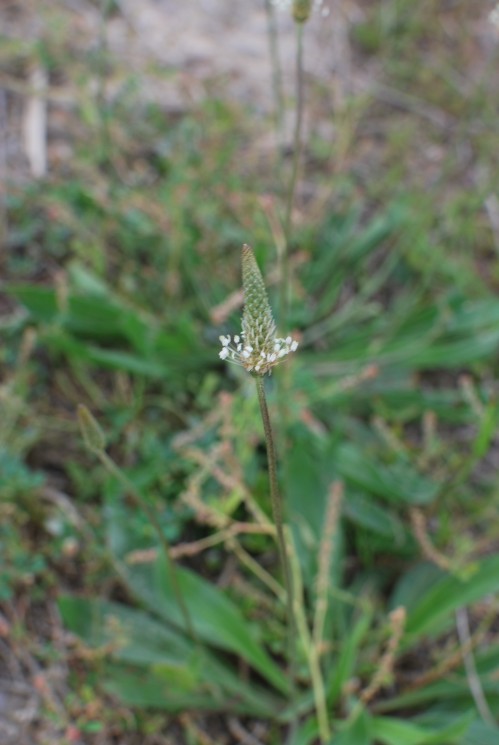
Common Name(s): Ribbon Grass, Narrowleaf plantain, Lamb’s Tongue
Scientific Name: Plantago lanceolata
Family: Plantaginacea
Bloom Period: Spring; March – May
Habitat: Ditches, Roadsides, Dry sandy soils, Disturbed areas, limestone soils
Description:
Calyx -4 united at base ; Corolla – 4 united ; Stamens – 4; Pistil – 1:2; Fruit – capsule with a lid (pyxis)
General Info:
Ribbon Grass is considered a common invasive (alien) species, native to the United Kingdom. Not to be confused with Nolina lindheimeriana, uncommon to the Houston area, but also known as Ribbon Grass.
Commentary: Look for this near ditches. The tiny white flowers are only present very briefly early in Spring. The remaining plain, naked spikes are easy to spot, after the flowers are gone. This is a beautiful, and often overlooked “ditchweed” well worth the hunt.
Gallery:





Common Name(s): Showy Primrose, Amapola, Evening Primrose, Pink Evening Primrose
Scientific Name:
Family: Onagraceae
Bloom Period: Spring, Summer, Fall; March – July
Habitat: Roadsides, Pastures, Prairies, Open Woodlands
Description: Calyx – 4; Corolla – 4; Stamens – 8; Pistil – 1 .Fruit: cylindrical capsule.
General Info: A classic specie of the Evening-Primrose family, which gets its name from the opening of the flowers in the afternoon to evening. (Although, many will open in full sun any time of day, except early morning). This plant grows in colonies from rhizomes, and therefore can be seen in vast blankets across the landscape, especially near roadsides.
Commentary: This flower can be grown easily at home, as the plant can be regenerated from the rhizomes (one season after planting); alternatively, it grows well from seeds harvested in the fall.
Gallery:
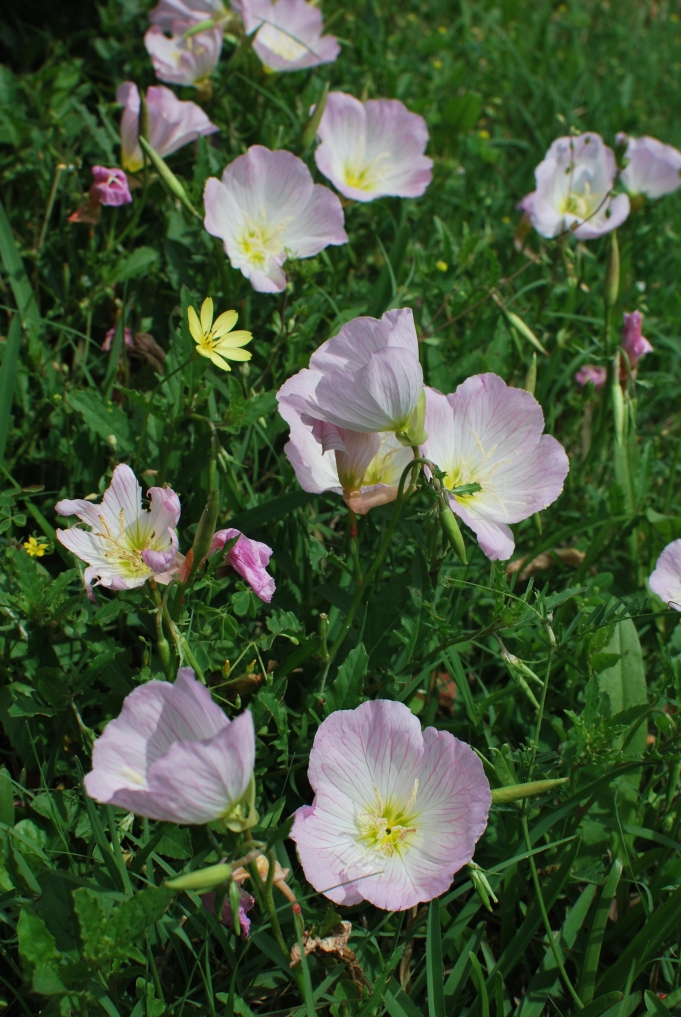




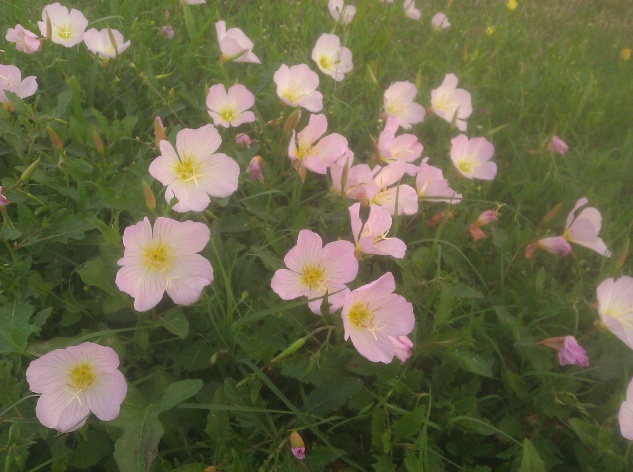

Common Name(s): Philadelphia Fleabane, Philadelphia daisy
Scientific Name:
Family:
Bloom Period: Spring, Fall, Winter; December – May
Habitat: Roadsides, Pastures, Lowlands, Sandy soils, Stream banks, Woodland edges
Description: 150-400 Ray flowers; Calyx – pappus; Corolla – 5- tubular; Stamens – ; Pistil – 2:1 ; Fruit: achene.
General Info: This plant is quite conspicuous, and can grow up to 3 feet tall. Blooms mainly in early spring, then sporadically in Fall and rarely in Winter.
Commentary: This plant was used traditionally to treat sore throats, colds, and stomach ailments. The scientific name actually makes sense: from the Greek: Eri meaning “early” and geron, “old man” for the early white seed heads.
Gallery:





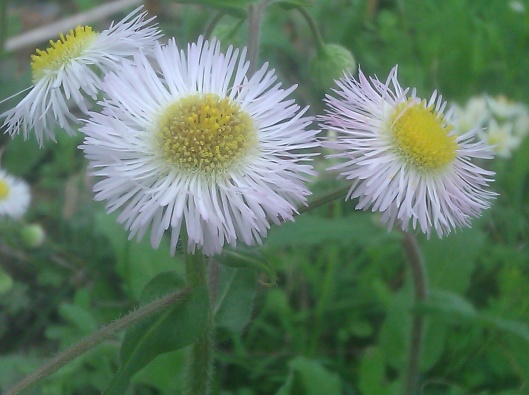

Common Name(s): White Nightshade, Common Nightshade
Scientific Name: Solanum triquetrum
Family: Solanaceae
Bloom Period: Spring, Fall. Up to Year Round in moist areas
Habitat: Thickets, edges of woodlands, disturbed areas,
Description: Callyx – 5; Corolla – 5; Stamens – 5 yellow, Pistil -1. Fruit pea sized red or orange berry when ripe. Poisonous.
General Info: One of my favorite wildflowers, which in shaded, moist areas will grow almost year-round. Also, this plant is extremely hardy, and often thought an obnoxious weed. It blooms early in the Spring. The flowers may seem familiar; tomatoes -another Solanaceae member – have similar flowers, nearly identical in shape and size. However, the Nightshade flowers are white, whereas tomato flowers are all yellow. Also, the berries look like pea-tomatoes, but don’t eat, they are poisonous!! Finally, look carefully for these flowers, as they hang upside down from the branch; this makes them a little hidden, and unexpected, since you brain is probably used to looking for upright flowers.
Commentary:
I have personally witnessed a plant growing in our apartment complex parking lot. Despite the small size of the crack in the pavement, this beautiful, healthy looking Nightshade rapidly grew, and flowered. The plant was razed to the ground by a weed-whacker 3-4 times over the spring, summer and fall. Each time, I watched in amazement as the plant regrew and re-flowered. Finally, it seems it finally disappeared, since I find only a crack. Yet, I keep watch for it to spring up again. Perhaps I should plant a seed in its memory.
Gallery:
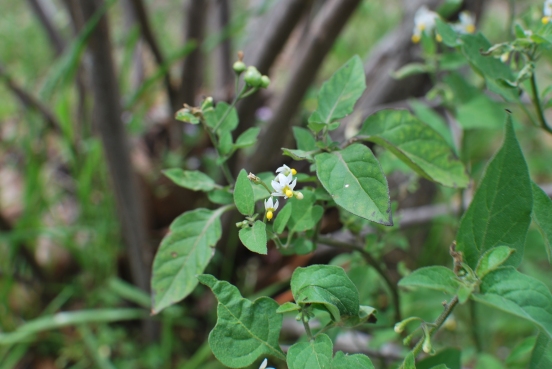






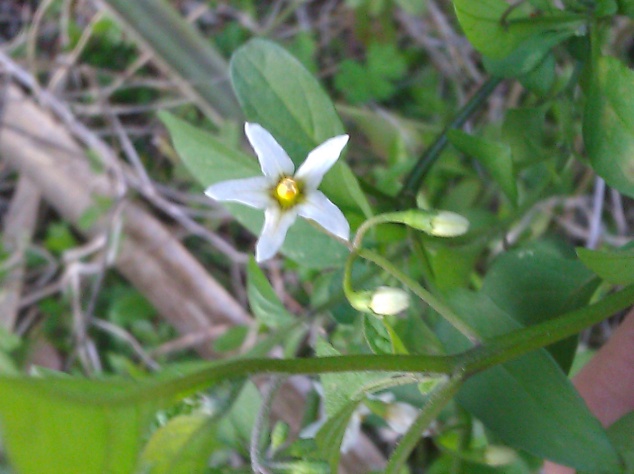

Common Name(s): False Garlic, Crow Poison, Odorless-onion
Scientific Name: Nothoscordum bivalve
Family: Lilaceae
Bloom Period: Spring
Habitat: Lawns, Ditches, Roadside, Prairie, Disturbed areas, pastures, bottomlands, open woodlands
Description: Flowers – perfect, 1-many atop a leafless stalk (basal leaves). Flowers often in clusters. Calyx-3; Corolla-3, Stamens-6; Compound Pistil-3. Fruit: obovoid capsule.
General Info: This is one of the most conspicuous, earliest bloomers of Spring. In the Houston area, this can bloom as early as January. Usually by late February, this wildflower is widespread across any green space. False garlic is similar to wild onion and garlic in appearance (same family), but not in smell – False Garlic is odor-less. Moreover, despite its similarity, False Garlic is not edible. In areas of moderate moisture, this flower can be found year-round, and can form beautiful large colonies.
Gallery:


































